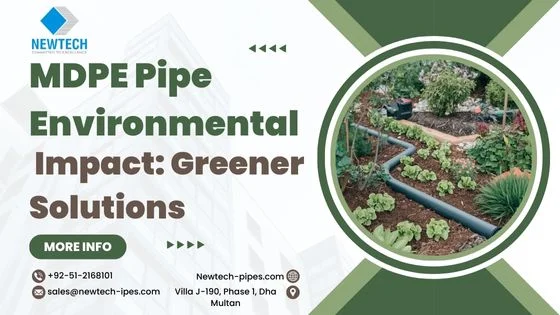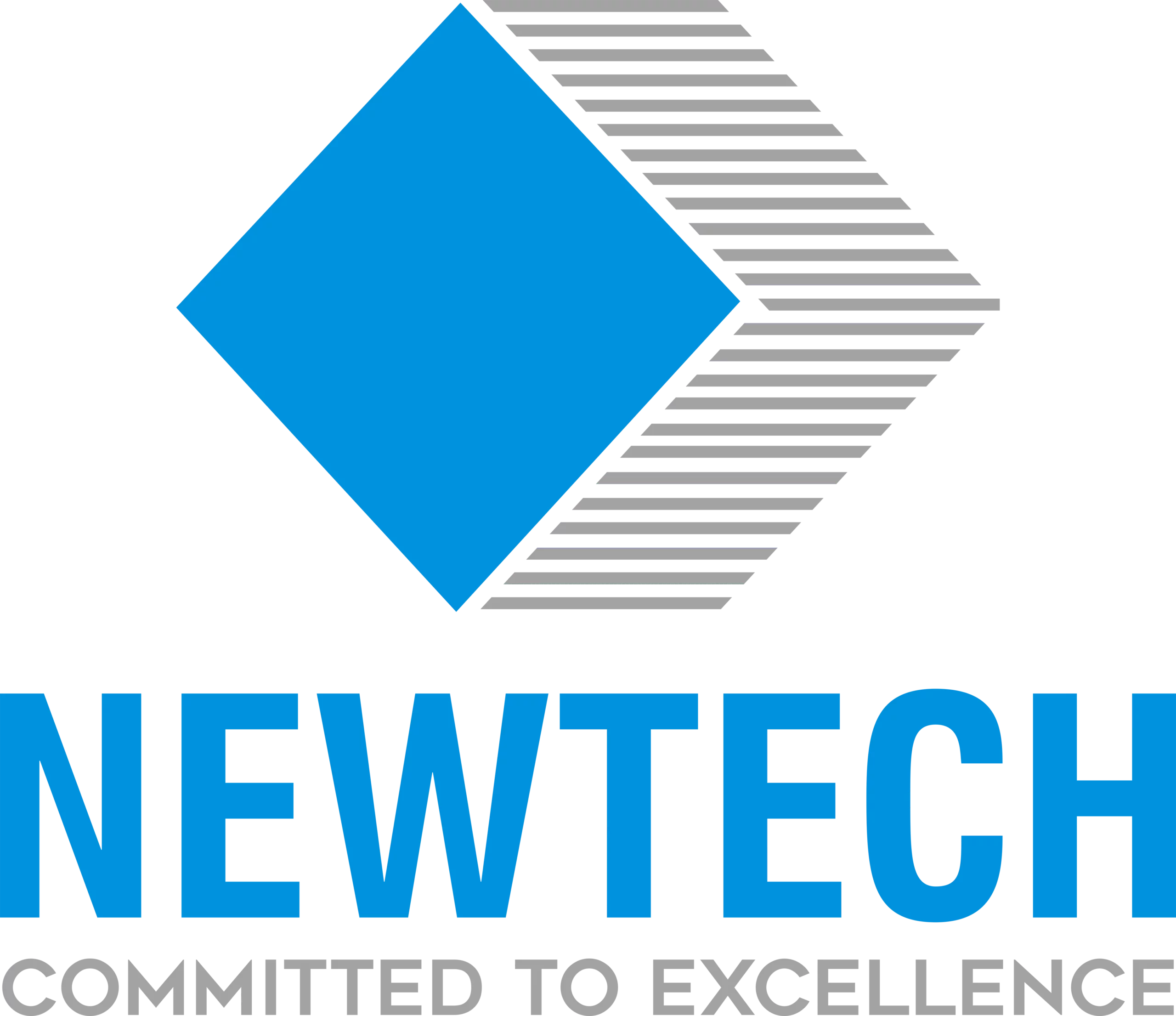Introduction to MDPE Pipe Environmental Impact
MDPE, or Medium-Density Polyethylene, is a thermoplastic polymer renowned for its versatility and durability. Used predominantly in water supply, gas distribution, and drainage systems, MDPE pipes offer significant advantages over traditional materials. Their flexibility allows for easier installation, particularly in challenging terrains. Additionally, the resistance to corrosion and impact enhances their longevity, making them a popular choice for both residential and industrial applications. As environmental concerns rise, understanding the benefits and implications of MDPE pipes is essential in the quest for sustainable infrastructure solutions.
The Importance of Sustainable Materials
The construction and plumbing industries have a profound impact on the environment. Opting for sustainable materials like MDPE is pivotal for minimizing ecological footprints. Eco-friendly materials not only reduce resource depletion but also mitigate waste and pollution. The shift towards sustainable practices reflects a broader commitment to environmental stewardship, encouraging companies to innovate and prioritize green solutions. By choosing materials that align with these values, stakeholders contribute to a healthier planet, fostering a culture of sustainability that transcends generations.
Evaluating the Environmental Impact of Traditional Pipes
Traditional piping materials such as PVC and metal have significant environmental drawbacks. The production processes of these materials often involve harmful chemicals, excessive energy consumption, and substantial greenhouse gas emissions. In contrast, MDPE pipes present a lower environmental burden. A comparative analysis reveals that while PVC is less expensive, the long-term costs associated with its disposal and environmental impact can be detrimental. By examining these contrasts, it becomes clear that the transition to MDPE pipes represents a more sustainable option for modern infrastructure.
The Lifecycle of MDPE Pipes
Understanding the lifecycle of MDPE pipes is crucial to assessing their environmental impact. From production to disposal, each stage presents opportunities for improvement. The manufacturing process utilizes less energy and fewer toxic materials compared to traditional options. During their operational phase, MDPE pipes demonstrate remarkable durability, reducing the need for frequent replacements. At the end of their lifecycle, proper recycling practices can reclaim valuable resources, diminishing landfill contributions. This comprehensive view underscores the importance of selecting materials with a favorable lifecycle.
Production Process of MDPE Pipes
The production of MDPE pipes is characterized by advanced manufacturing techniques that prioritize efficiency and sustainability. The process begins with the polymerization of ethylene, which requires significantly less energy than the production of many alternatives. Emissions during manufacturing are comparatively low, contributing to a reduced carbon footprint. Furthermore, the process generates minimal waste, with opportunities for recycling production scraps. This commitment to eco-conscious manufacturing practices positions MDPE as a frontrunner in sustainable piping solutions.
Transport and Installation: The Environmental Considerations
Logistics and installation methods play a critical role in the environmental impact of piping systems. The lightweight nature of MDPE pipes simplifies transportation, lowering fuel consumption and greenhouse gas emissions during transit. Additionally, the ease of installation reduces labor hours and associated energy use. Efficient installation practices not only enhance project timelines but also minimize disturbances to the surrounding environment. These factors highlight how the selection of MDPE pipes can lead to a more sustainable approach throughout the entire project lifecycle.
Durability and Longevity of MDPE Pipes
One of the defining features of MDPE pipes is their impressive durability. Resistant to corrosion, cracking, and environmental stressors, these pipes can withstand harsh conditions, ensuring a long service life. This longevity translates to fewer replacements and repairs, significantly reducing waste over time. In a world where resource conservation is paramount, the ability of MDPE pipes to remain functional for decades positions them as a sustainable choice. Their resilience also contributes to cost savings for consumers and municipalities alike, making them a pragmatic solution for future infrastructure projects.
Recyclability of MDPE Pipes
As environmental consciousness grows, the recyclability of materials becomes increasingly important. MDPE pipes can be recycled effectively, reclaiming valuable resources and reducing landfill waste. Innovative recycling technologies are emerging, allowing for the transformation of used MDPE into new products, thus closing the loop in the lifecycle of these materials. By exploring end-of-life options for MDPE pipes, communities can implement circular economy principles, enhancing sustainability and resource efficiency.
Innovative Technologies in MDPE Pipe Production
Technological advancements continue to enhance the production and functionality of MDPE pipes. Innovations such as improved polymerization techniques and enhanced molecular structures lead to stronger, more resilient products. These developments reduce the environmental impact by optimizing material usage and minimizing waste. Additionally, smart manufacturing processes are being integrated, further decreasing energy consumption during production. Embracing these innovations positions MDPE pipes as a key player in the transition toward greener infrastructure solutions.
The Role of MDPE in Water Conservation
Water scarcity is an urgent global issue, and MDPE pipes play a significant role in addressing this challenge. Their efficiency in transporting water minimizes leaks and losses, contributing to better water management. Furthermore, MDPE’s resistance to scale and biofouling ensures that water quality remains high, reducing the need for treatment chemicals. By investing in MDPE piping systems, communities can enhance water conservation efforts, making strides toward sustainable resource management.
Case Studies: Successful Implementation of MDPE Solutions
Numerous real-world examples illustrate the environmental benefits of MDPE pipes. In urban renewal projects, municipalities have adopted MDPE for water and gas lines, resulting in significant reductions in maintenance costs and environmental disruptions. One notable case involves a city that transitioned from traditional piping to MDPE, resulting in a 30% decrease in water loss due to leaks. These case studies not only demonstrate the effectiveness of MDPE but also inspire other communities to adopt similar sustainable practices.
Comparative Costs of MDPE vs. Other Materials
While initial costs are often a consideration, evaluating the long-term savings associated with MDPE pipes reveals a compelling argument for their adoption. MDPE pipes generally have a higher upfront cost compared to traditional materials like PVC. However, their durability, lower maintenance needs, and recyclability contribute to significant savings over time. Analyzing the total cost of ownership, including installation, operational, and disposal expenses, clearly positions MDPE as a financially sound investment for sustainable infrastructure.
Regulatory Standards and Guidelines
Understanding the regulatory landscape surrounding piping materials is essential for stakeholders. Governments and environmental agencies are increasingly prioritizing sustainability, leading to stricter regulations on material use and waste management. MDPE pipes often meet or exceed these standards, reflecting a commitment to environmental responsibility. Familiarity with these regulations can empower consumers and businesses to make informed choices that align with both legal requirements and sustainability goals.
Future Trends in MDPE Pipe Usage
The future of MDPE pipes looks promising, with ongoing research and development driving innovations. Emerging trends include the integration of smart technologies that monitor pipe conditions in real-time, enabling proactive maintenance and leak detection. Additionally, the growing emphasis on sustainability in infrastructure projects will likely increase the demand for MDPE solutions. As the industry evolves, the role of MDPE pipes in sustainable practices will only expand, paving the way for greener solutions in the years to come.
Community Impact and Stakeholder Engagement
Local communities stand to benefit significantly from the adoption of MDPE piping solutions. Reduced environmental impact and improved water management contribute to better quality of life. Engaging stakeholders—residents, businesses, and government entities—fosters a collective approach to sustainability. By prioritizing MDPE pipes in community projects, cities can enhance their environmental initiatives and create a more resilient infrastructure for future generations.
Advocating for Greener Choices
Promoting sustainable selections is crucial for both consumers and businesses. Tips for making greener choices include conducting thorough research on material options, considering lifecycle impacts, and advocating for transparency in supply chains. Businesses can lead by example, implementing sustainable practices in their operations and encouraging customers to choose environmentally responsible products. This advocacy not only drives demand for greener solutions but also fosters a culture of sustainability within communities.
Barriers to Adoption of MDPE Solutions
Despite the clear benefits, several barriers hinder the widespread adoption of MDPE pipes. Misconceptions about performance and cost persist, often deterring stakeholders from making the switch. Additionally, lack of awareness about the environmental advantages of MDPE can lead to resistance against change. Addressing these challenges through education and outreach is essential to overcome hesitations and promote the transition toward sustainable piping solutions.
Education and Awareness Initiatives
Raising awareness about the benefits of MDPE pipes is critical in fostering a sustainable future. Educational initiatives aimed at consumers, industry professionals, and policymakers can bridge knowledge gaps and encourage informed decision-making. Workshops, informational campaigns, and case study presentations can effectively convey the advantages of MDPE pipes. By promoting education, communities can empower stakeholders to make choices that benefit both the environment and their economic interests.
Conclusion: A Greener Future with MDPE Pipes
The environmental advantages of MDPE pipes are undeniable. From reduced emissions during production to their recyclability and durability, these materials present a compelling case for sustainability. As communities and industries face mounting pressure to adopt eco-friendly practices, MDPE pipes stand out as a reliable and responsible choice. Embracing these solutions can lead to a more sustainable infrastructure, ensuring a healthier planet for future generations.
Call to Action
Encouragement to explore and adopt greener piping solutions is essential. Communities, businesses, and individuals alike are urged to consider the profound impact of their material choices. By prioritizing MDPE pipes, stakeholders can contribute to a sustainable future, reducing environmental footprints and enhancing resource management. It is time to take action and invest in the solutions that will shape a greener planet for all.
FAQs
1. What is MDPE and what are its main uses?
MDPE (Medium-Density Polyethylene) is a thermoplastic polymer known for its versatility, durability, and flexibility. It is commonly used in water supply systems, gas distribution, and drainage systems.
2. How does MDPE pipe contribute to sustainability?
MDPE pipes contribute to sustainability through their low environmental impact in production, recyclability, and long-lasting durability. They require less energy for production and transportation, and they can be recycled at the end of their lifecycle.
3. What are the environmental benefits of MDPE over traditional piping materials?
Unlike traditional materials like PVC and metal, MDPE has a lower carbon footprint, uses less toxic chemicals in production, and is more energy-efficient to manufacture and transport. It also has a longer lifespan, reducing the need for replacements.
4. Can MDPE pipes be recycled?
Yes, MDPE pipes are recyclable. They can be reprocessed into new materials, which reduces waste and conserves resources, aligning with circular economy principles.
5. How does the use of MDPE pipes reduce water loss?
MDPE pipes are highly resistant to leaks and cracking, which minimizes water loss. Their durability ensures that they remain functional for extended periods, contributing to better water management and conservation.
6. Are MDPE pipes more expensive than other materials?
While MDPE pipes may have a higher initial cost compared to materials like PVC, their long-term cost savings in terms of reduced maintenance, fewer replacements, and recyclability make them a more economical choice in the long run.
7. How does the installation of MDPE pipes affect the environment?
MDPE pipes are lightweight and easy to install, which reduces fuel consumption during transportation and lowers the energy required for installation. These factors contribute to a smaller environmental footprint during the overall project.
8. What are some innovative technologies in MDPE pipe production?
Recent innovations in MDPE production include improved polymerization techniques and the use of smart manufacturing processes that reduce material waste and energy consumption, leading to even more sustainable piping solutions.
9. What regulatory standards do MDPE pipes meet?
MDPE pipes meet or exceed many environmental and safety regulations, making them a compliant choice for sustainable infrastructure projects. They align with government and industry standards for eco-friendly materials.
10. What future trends are emerging for MDPE pipes?
The future of MDPE pipes includes the integration of smart technologies for real-time monitoring of pipe conditions, as well as a growing emphasis on their role in sustainable construction projects. As infrastructure projects prioritize green solutions, MDPE usage is expected to rise.


